ISSF Makes a Strategic Plan for Sustainable Seafood

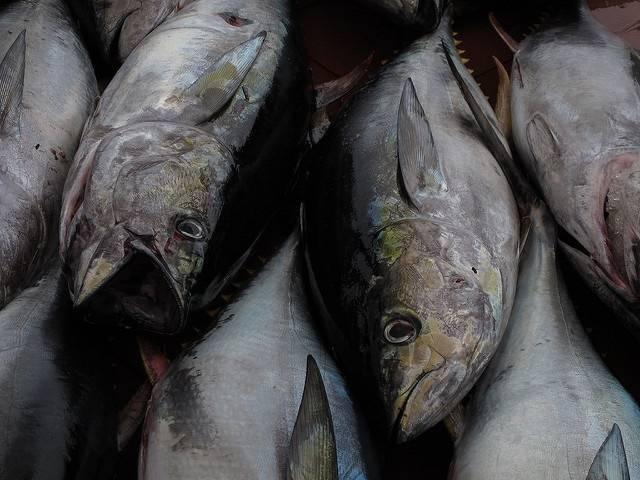
By Brad Ack, World Wildlife Fund (WWF) Senior Vice President, Oceans
An important trend is taking shape in the fight to protect nature: more and more businesses are adopting bold conservation goals — even when some national governments fail to do the same.
We saw this last year, when more than 1,800 U.S. businesses and investors joined the We Are Still In coalition and pledged to help America remain a leader on climate action. We’ve seen it with individual companies like McDonald’s, which has committed to sourcing only deforestation-free beef by 2020. And, this week we see it as the International Seafood Sustainability Foundation (ISSF) launches its new five-year strategic plan that aims to reverse unsustainable tuna fishing practices by further focusing the power of market demand.
In 2009, CEOs from eight major tuna processing and canning companies, along with marine scientists and environmental champions, founded ISSF because they felt that governments responsible for managing tuna populations and fishing were moving too slowly and ineffectively to adopt sustainable practices. These business leaders saw a clear role for industry in driving positive change and the adoption of sustainable fishing practices. They recognized that dwindling tuna stocks posed a serious threat to the long-term viability of their businesses, to consumers and fishing communities alike, and ultimately to the health of ocean ecosystems.
Today, ISSF is a leader in developing industry-wide conservation measures to end unsustainable tuna fishing. These measures include, among other things, curbing illegal fishing and the reduction of bycatch (when tuna fishing gear catches wildlife like turtles, sharks and seabirds, as well as juvenile fish). Through their participation in ISSF, tuna companies dedicate funds to advance better policies and practices, and to support much-needed conservation science.
What sets this endeavor apart from other tuna conservation efforts – and the reason World Wildlife Fund (WWF) has supported ISSF’s mission since the beginning – is the foundation’s focus on harnessing the power of the market to drive progress, rather than solely relying on legal mandates. That’s because each ISSF participating company has accepted a binding agreement to comply with the foundation’s performance standards. By complying with conservation targets set by ISSF, and measurably improving their environmental performance, member companies are able to present themselves as ISSF compliant with retailers and consumers who are interested in sustainable seafood. Failure to comply results in termination of a company’s participation in ISSF.
The overall market share of ISSF participating tuna companies – now about 75% of the global canned tuna market – provides real leverage for advancing conservation. One of ISSF’s earliest measures required canned tuna products sold by participating companies to be traceable all the way back to the vessel that originally caught the fish. Major tuna companies had already been tracking the origins of their products for decades for quality and safety control purposes, and the participants committed to using this existing infrastructure to better trace fish throughout the industry. Doing so makes it easier to ensure that the fish in their products are caught in accordance with sustainable fishing standards.
ISSF early on adopted another key measure: all vessels that sell tuna to ISSF participating companies must obtain a unique vessel identification number, much like an automobile’s VIN number. This ensures that rogue vessels with no regard for the rules can’t simply change flags or names to avoid consequences and stay in business. The adoption of this measure led to changes in international policy and brought about the creation of another market-driven tool: the ISSF ProActive Vessel Register (PVR). Today, ISSF participants each commit to buy only from vessels listed on the register, which means that vessel owners who want to sell to buyers of 75% of the global canned tuna market must adhere to all the conservation performance targets as a requirement of being on the register. Importantly, continuous improvement is a core principle of ISSF, which means that we will expect to see additional measures in the future and that the standards of tuna fishing and management will continue to rise as a result.
Yet another ISSF-led measure has leveraged data collection from companies to enable more frequent and accurate scientific assessments of tuna populations, resulting in more effective management and conservation measures. Thanks to measures enacted by both ISSF and regional fishery management organizations around the world, the percentage of tuna stocks that are being fished more sustainably nearly doubled from 35% in 2011 to 65% in 2015. But there is still work to do and some populations – particularly those that don’t end up canned, like Pacific bluefin tuna – have yet to recover. ISSF’s new plan, Advancing Sustainable Tuna Fisheries, which was released this week, is expected to drive further progress by actively supporting development of Fishery Improvement Projects (FIPs) leading to measurable change on the water. In particular, ISSF will support FIPs by providing science-based guidance and verification tools to make these projects more transparent and successful.
Without question, the world still needs leadership from national governments and civil society in driving strong environmental policy and regulation. The private sector’s responsibility to turn a profit will always be weighed in setting their conservation goals. Governments, on the other hand, can set policies that are in the public interest regardless of their impact on corporate bottom lines, and they have the capability to enact more sweeping changes than non-state actors. In 2016, the Obama Administration did just that, finalizing a seafood traceability program for products sold in the U.S. that applies not just to tuna, but also to grouper, swordfish, red snapper, blue crab and more.
Nevertheless, the model ISSF follows, as well as other private sector initiatives, shows businesses that depend on nature (really all of them) must assess their environmental dependence and risks and act swiftly and decisively to make progress. Now more than ever, the market is prepared to recognize and demand this kind of leadership.
The Vetting is Done. Oregon Cap and Invest Funds Forests, Farms and Wildfire Protection.


By Julius Pasay
As Oregon’s political leadership debates the details of a Cap and Invest bill to begin decarbonizing the state’s economy, opinions and misleading data threaten to overly politicize a forward-thinking plan to benefit the people and land of Oregon. Through all of this, there are some important points to keep in mind.
An Oregon Cap and Invest bill will bring revenue to the state of Oregon to help alleviate the state’s budget challenges. California’s cap and trade program has generated 4.4 billion dollars to the state between 2012 and 2017[i].
Oregon can be a net exporter of carbon credits and bring out-of-state revenue to in-state forests and farms as California polluters look at states like Oregon to purchase offsets. This market linkage is already proposed in the bill and would bring the Oregon, California, Ontario and Quebec carbon offset markets together. Oregon, by far, has fewer greenhouse gas emitters than California, but a high potential to sequester carbon and reduce emissions in multiple sectors such as working forests, grazing lands and dairy digesters. By linking an Oregon-tailored Cap and Invest program to California’s, Oregon can have a seat at the table to write rules that work for Oregon farming and forestry. Currently, it is difficult for Oregon forests and farms to take advantage of California’s demand for offsets because they have to play by California’s rules.
Revenue from the Cap and Invest program can be used for forest management activities that reduce wildfire risk and protect communities vulnerable to wildfire. Fuel reduction thinnings and prescribed burning costs money. A share of Cap and Invest program revenues are earmarked to benefit rural communities impacted by climate change and to invest in forestry, agriculture, rangeland and coastal area carbon sequestration.
The Cap and Invest bill will not slow the Oregon economy. Luckily for Oregon, California has been the cap and trade guinea pig since 2013 and the data show that far from the negative impacts promised by attack ads and smear campaigns, their economy has thrived.[ii] In terms of forestry, California’s annual timber harvest volume does not appear to have been affected by the development of forest carbon offset projects and employment in the forest products industry has increased since 2013[iii].
This bill is not a new idea and there has been plenty of time to argue the finer points. Oregon has been discussing and debating climate legislation aimed at reducing emissions since 2007. Many specific cap and trade bills have been introduced over the years, including HB 3545 (2007), SB 80 (2009), HB 3250 (2015), SB 1574 (2016) and SB 1070 (2017) to name a few. The time to pass the Oregon Cap and Invest bill is now.
[i] California Legislative Analyst’s Office, The 2017-18 Budget: Cap-and-Trade, February 2017.
[ii] California Air Resources Board, 2017 Edition, California GHG Emission Inventory, June 2017.
[iii] California Employment Development Department, California Labor Statistics, accessed online 1/8/2018.
Image credit: Flickr/Bureau of Land Management Oregon and Washington
Julius Pasay is the Forestry Project Analyst for The Climate Trust
Renewables Can Narrow the Global Digital Divide


According to many global organizations, including the World Economic Forum, approximately 4 billion people lack internet access. Their inability to venture online is compounded by the fact many of these same citizens are not connected to the grid. So even if cellular networks are readily available, the inability to recharge a phone at home means connectivity is often a luxury.
Much of the problem lies in the oft-discussed “last mile.” Many citizens may see those power lines or cell phone towers easily from their homes or businesses, but cannot afford, or even attain, reliable access to either.
As explained in a joint report by Bloomberg New Energy Finance (BNEF) and Facebook, the double whammy of lacking reliable internet access and power creates countless challenges: time lost by walking up to 10 miles a week just to recharge phones; the costs incurred by spending money charging up at local kiosks; and more pollution as many cell phone towers in emerging economies use diesel to keep the networks humming.
And therein lies many opportunities for both multinationals and innovative startups to reap new business opportunities while improving the lives of billions worldwide. Furthermore, new developments in telecommunications infrastructure and early-stage venture capital can help more people keep the lights on and stay connected. Incomes can be boosted, more doors to education and skills training can open and the local environment can even benefit.
The two keys that can make this happen are investments in battery storage and solar power. The report cites data stating solar power’s cost has plunged 82 percent since 2010; lithium ion battery packs have decreased 76 percent in price since that year.
Hurdles, however, include funding, training and developing such an infrastructure in the first place. The BNEF-Facebook report touts one solution that could provide a stepping stone: hybrid power systems that meld solar installations, diesel generators and batteries. The report’s authors concluded that these setups could save cell phone tower operators as much as 54 percent as they keep their off-grid towers in operation.
If multinationals wish to not just align, but succeed, in solving those pesky United Nation Sustainable Development Goals (SDGs), they should consider partnerships with local companies in regions where incomes are increasing, but the infrastructure is not catching up. The tackling of SDG 7 (sustainable energy for all) and SDG 9 (inclusive infrastructure worldwide) offers companies a chance to show that they are responsible, sustainable and inclusive. Moreover, such projects also promise new revenue streams - and a path to communicate to a global audience how they are breaking new ground when it comes to corporate responsibility.
Image credit: Nayuki/Flickr
Board Oversight, Outperformance, and the Sustainability Disconnect
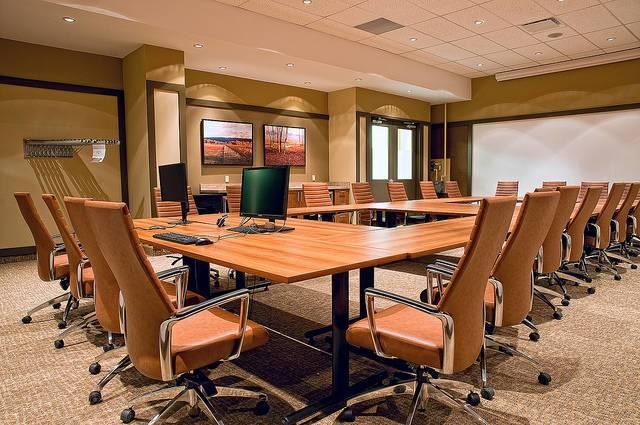

By Nancy S. Cleveland, CEO & co-founder, Sustrana
Active shareowners, stock exchanges, and rating and reporting system providers1 all push for company boards to include sustainability as part of their governance duties. Why? Because research has shown that good sustainability management—using sustainability best practices to identify and manage significant environmental, social, and governance (ESG) issues—is a means for outperformance. Managing the right ESG issues well can lead to reduced risk, increased efficiency, and revenue growth.
So how can more companies approach sustainability in a way that guarantees competitive success, and what holds most back from achieving it?
The Big Sustainability Disconnect
There’s little shareholders like better than sustainability-generated outperformance; it benefits the company’s bottom line and everyone involved. But moving from concept to reality is not so easy without the right tools and tactics. A major impediment to sustainability success is that those managing sustainability programs often focus their efforts on completing projects as ultimate end goal, rather than on embedding sustainability management into business operations, which ultimately drives more value. The disconnect here is clear, but the latter technique requires a strategic view and comprehensive management system to be properly executed.
A sustainability management system (SMS) enables management teams to routinely identify and prioritize the ESG issues that have a real impact on the bottom line and help those who spearhead sustainability programs to manage them effectively over the long term. A system like this combines strategy with accountability to make outperformance a real possibility for companies of all sizes.
Board Oversight Requires a Sustainability Management System
The emerging discipline of sustainability management is a powerful tool for smart businesses today. Sustainability management leverages expertise and insights from the field of sustainability to inform business decisions using industry-specific operations experience. This is what fuels the systematic identification and management of ESG risks and opportunities that directly influence the short-, medium-, and long-term financial performance and success of the company. Without applying this nuanced method, companies attempting to address their sustainability situation are often unable to fully understand the issues that exist within their business or those may arise in the future, which makes addressing them a complicated task.
The need for clear, informed connections between sustainability activity and strategy is critical. Together, boards and their management teams have a duty to protect and grow a company’s overall value, but they can’t fulfill this duty or function well without high-quality, concise, reliable sustainability information that comes from the experts and informs a sound strategy. Fully equipped management systems that include audit functions and internal controls provide protocols for developing this type of information. Within management systems, data and information is distilled, analyzed, and organized into reports that reveal which company activities connect to and support an overall sustainability strategy. Boards can easily apply their own business expertise to the developed reports and provide feedback and guidance to management about the direction the company will take.
A comprehensive SMS establishes a dependable process for consistently uncovering and solving ESG issues, thereby managing evolving risks and leveraging new opportunities. Without such a system, many issues and opportunities for business improvement go undetected and risk reducing sustainability efforts into a tangle of disconnected pet projects and misplaced goals.
A company’s Chief Sustainability Officer (CSO) or equivalent program leader should also work directly with each business line to define all sustainability issues and set key focus areas by assessing and prioritizing problems with the help of their SMS. This approach will lead to solutions that align with the company’s internal strategy and processes and ongoing business goals. If a business has a specific revenue growth goal, a sustainability management team made up of the CSO, their support personnel, and the SMS provider can identify both bottom- and top-line sustainability opportunities and demonstrate to leadership exactly how new projects will advance the revenue growth business objective.
Top-Down Support Fuels Outperformance
The hue and cry for board oversight of sustainability is based on the perception that such oversight will force the management team to prioritize sustainability and thereby deliver outperformance. But the real outcome will depend on whether the sustainability work is empowered by full top-down support.
Because sustainability issues cut across all business functions and sustainability work requires effort from many different groups inside a company, effective empowerment starts at the management level with the CSO who reports directly to the CEO or C-level officer. If the management team’s focus on sustainability does not include top-down leadership and strong executive support, they risk causing sustainability efforts to be viewed as interrupting “real” work or treading on others’ turfs. The ability to address relevant issues, prioritize them, and collaborate to find innovative solutions will be undermined or altogether destroyed.
Board oversight of sustainability is worthwhile when management teams take advantage of modern sustainability management systems and integrate into their leadership ranks a sustainability officer who can add business objectives into the mix. Only when strategy is tied to and informs business goals, can companies successfully use sustainability best practices to manage risk, control costs, and grow revenue, fully reaping the outperformance value proposition of sustainability management today.
[1] See, for example: Ceres, Lead from the Top: Building Sustainability Competence on Corporate Boards; Nasdaq, ESG Reporting Guide; and GRI, GRI Standards.
2 According to a 2016 MIT-Sloan and Boston Consulting Group survey of thousands of executives, more than 90% believe in the business value of sustainability, but only 25% have a strategy for how to achieve that value. See MIT SMR, Investing for a Sustainable Future.
Northern Trust Exec Engages with Quinlan Business School Students re. CSR
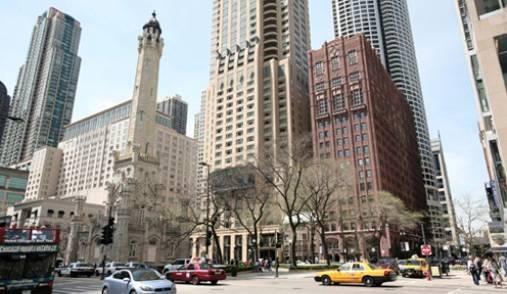

By the Quinlan School of Business
There was standing room only at The Baumhart Center at Loyola’s Quinlan School of Business on its campus in downtown Chicago for the first event of the Kelly Tyrrell Conversation Series. The Tyrrell Conversations aim to engage Loyola students in monthly dialogues with social impact, enterprise, and responsibility leaders. This initial conversation featured Connie L. Lindsey, Northern Trust’s Executive Vice President and Head of Corporate Social Responsibility and Global Diversity & Inclusion.
The goal of these dialogues is to help students to imagine their own futures by exposing them to promising careers in social business and allowing them to explore the journey to get there. Lindsey, who is now responsible for the design and implementation of Northern Trust’s global CSR and diversity and inclusion strategy, started out on her journey with a social change mindset. “I wanted to be a social worker,” she began, “because I thought I could heal the world and still be home in time for dinner.” However, as she became more aware of her strength with numbers, Lindsey went on to complete her education with a financial focus. She explained that this strong business foundation allows her to have a greater understanding of what it takes for businesses to do what they need to do.
When asked about how she ties social responsibility in with corporate profit, Lindsey responded that she is actually pondering taking the word ‘social’ out of the title altogether— “it’s really the whole responsible corporation,” she said. When given her current role at Northern Trust, she began by taking inventory of the corporation’s initiatives, the employees’ values, and key clients’ interests. Her goal was to create strong a social responsibility strategy while also speaking the corporation’s language and bringing in measurable returns. When questioned about the return on investment (ROI) of CSR, she laughed, “we know what happens when you don’t invest in it!” She further discussed the importance of “thinking about how we, as corporations with the money and resources, can make a difference” through research and tackling tough issues.
The event concluded with an opportunity for students to ask Lindsey their own questions. More students had questions than time allowed for, but Lindsey made sure to leave all Ramblers present with the following advice:
“For corporations like mine who are really interested in social responsibility, it’s really those individuals who have some business acumen [that stick out]. Because if you’re going to work with the business unit, you need to understand how the company makes money, you need to understand what the financial metrics are … Think about what the core skills are.” Once you have those core business skills, she said, you’re even more empowered to be the change you wish to see in the world.
Photo: Quinlan School of Business
Originally published by the Quinlan School of Business and distributed by 3BL Media.
Over 100 Global Cities Get Majority of Electricity from Renewables
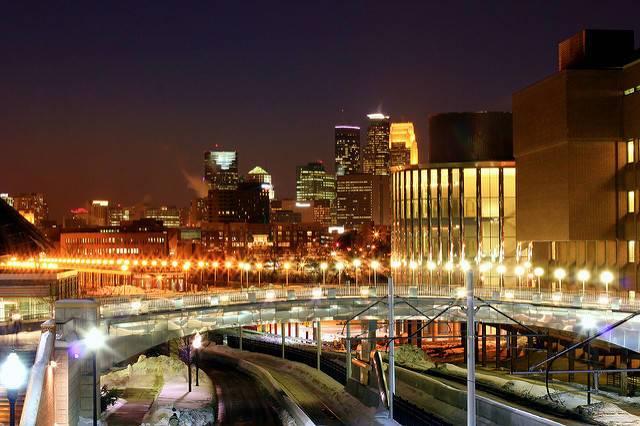

By CDP
Cities are increasingly reporting that they are powered by renewable electricity, according to data published today by CDP. The global environmental impact non-profit CDP, holds information from over 570 of the world's cities and names over 100 (see list below) now getting at least 70% of their electricity from renewable sources such as hydro, geothermal, solar and wind.
The list includes large cities such as Auckland (New Zealand); Nairobi (Kenya); Oslo (Norway); Seattle (USA) and Vancouver (Canada), and is more than double the 42 cities who reported that they were powered by at least 70% clean energy in 2015.
CDP’s analysis comes on the same day the UK100 network of local government leaders announces that over 80 UK towns and cities have committed to 100% clean energy by 2050, including Manchester, Birmingham, Newcastle, Glasgow and 16 London boroughs.
According to the World Economic Forum, unsubsidized renewables were the cheapest source of electricity in 30 countries in 2017, with renewables predicted to be consistently more cost effective than fossil fuels globally by 2020.
The new data has been released ahead of the Intergovernmental Panel on Climate Change (IPCC) conference in Edmonton, Canada on 5th March, when city government and science leaders will meet on the role of cities in tackling climate change.
Cities named by CDP as already powered by 100% renewable electricity include:
- Burlington, USA: Vermont’s largest city now obtains 100% of its electricity from wind, solar, hydro, and biomass. The city has its own utility and citywide grid. In September 2014 the local community approved the city's purchase of its ‘Winooski One’ Hydroelectric Facility.
- Reykjavik, Iceland: sources all electricity from hydropower and geothermal, and is now working to make all cars and public transit fossil-free by 2040. Iceland has almost entirely transitioned to clean energy for power and household heating.
- Basel, Switzerland: is 100% renewable powered by its own energy supply company. Most electricity comes from hydropower and 10% from wind. Advocating clear political vision and will, in May 2017 Switzerland voted to phase out nuclear power in favour of renewable energy.
CDP’s 2017 data highlights how cities are stepping up action on climate change with a sharp rise in environmental reporting, emissions reduction targets and climate action plans since 2015, following the ground-breaking Paris Agreement to limit global warming to below 2 degrees.
There is a growing momentum of the renewable energy cities movement beyond the UK, with cities around the world now aiming to switch from fossil fuels to 100% renewable energy by 2050.
In the United States, 58 cities and towns have now committed to transition to 100% clean, renewable energy, including big cities like Atlanta (Georgia) and San Diego (California). Earlier this month, U.S. municipalities Denton (Texas) and St. Louis Park (Minnesota), became the latest communities to establish 100% renewable energy targets. In addition to these recent pledges, CDP data shows a further 23 global cities targeting 100% renewable energy.
Much of the drive behind city climate action and reporting comes from the 7,000+ mayors signed up to The Global Covenant of Mayors for Climate and Energy who have pledged to act on climate change.
Kyra Appleby, Director of Cities, CDP said: “Cities are responsible for 70% of energy-related CO2 emissions and there is immense potential for them to lead on building a sustainable economy. Reassuringly, our data shows much commitment and ambition. Cities not only want to shift to renewable energy but, most importantly - they can. We urge all cities to disclose to us, work together to meet the goals of the Paris Agreement and prioritize the development of ambitious renewable energy procurement strategies. The time to act is now.”
Showing a diverse mix of energy sources, 275 cities are now reporting the use of hydropower, with 189 generating electricity from wind and 184 using solar photovoltaics. An additional 164 use biomass and 65 geothermal.
Mayor Miro Weinberger of Burlington, Vermont, USA, added: “Burlington, Vermont is proud to have been the first city in the United States to source 100 percent of our power from renewable generation. Through our diverse mix of biomass, hydro, wind, and solar, we have seen first-hand that renewable energy boosts our local economy and creates a healthier place to work, live, and raise a family. We encourage other cities around the globe to follow our innovative path as we all work toward a more sustainable energy future.”
CDP reports that cities are currently instigating renewable energy developments valued at US$2.3 billion, across nearly 150 projects. This forms part of a wider shift by cities to develop 1,000 clean infrastructure projects, such as electric transport and energy efficiency, worth over US$52 billion.
For a full view of cities generating electricity from renewables go to www.cdp.net/cities.
When Boycotts Work: NRA Losing Grip As Students Rise Up, Business Partners Run Out


Through a generation of school shootings and thousands of other gun-enabled murders, the National Rifle Association has held the fort against gun safety legislation. Now the NRA edifice is finally beginning to crumble in the wake of 17 murders at Marjory Stoneman Douglas High School in Parkland, Florida on February 14.
So, why could this time be different? This time the victims are speaking up, and big business is -- finally -- backing them up.
Students stand up against NRA
One clear difference about the Parkland murders is that the victims themselves have stepped into the media spotlight and publicly forced legislators to account for their votes.
Their example has already sparked a national movement that has spread to other schools across the country and reinvigorated the efforts of existing gun control organizations.
That's a clear contrast with other school massacres, in which parents and other adults have taken the lead.
In that regard, the age group of the students is a critical factor. High school students are fully capable of speaking for themselves. They can speak with composure under pressure without assistance from parents or other adults. By high school, teenagers are also just a few years if not mere months away from voting age, a fact that some of the activists have hammered home.
Social media also comes into play. Online sharing is often criticized for its negative influence on teenage behavior. Nevertheless, social media has helped to cultivate a generation of media-savvy youth who are seamlessly comfortable sharing their daily lives with an invisible audience, articulating their thoughts and feelings in words and images, and pushing back with incisive, share-worthy answers when challenged.
Along those lines, shared experiences also may be an important factor. Students across the country have a clear sense of what their peers in Parkland are going through, either because they have been affected by gun violence, or they have practiced active shooter drills in their own schools. The simple fact that such drilling is even necessary indicates that adult policy makers have failed, and that change must come from the students themselves.
Among the other factors that have also come together this time, the simple weight of frustration is accumulating after years of adult neglect. In particular, federal legislators failed to act after the Sandy Hook elementary school massacre in 2012, and more recently the Pulse nighclub and Las Vegas concert massacres.
NRA on the rocks
Triple Pundit has been following the boycott movement since the 2016 presidential campaign, and one of the patterns to emerge is that boycotts are more likely to have an impact when they involve a good company on the decline.That element of decline is evident in the National Rifle Association. It began in the 1870's as a bipartisan sporting and conservation organization with a broad civic mission. However, after a "takeover" by new leadership the 1970's the NRA adopted a partisan political agenda and advocated aggressively for an extremist interpretation of Second Amendment rights.
Since the 1970's, the percentage of households owning guns has been dropping and researchers have noted that the NRA's membership is skewing significantly to the right. The result is that the organization has lost any real claim to reflect a broad consensus among Americans. From that perspective, the NRA brand is in decline.
That doesn't necessarily mean NRA membership has declined. Another part of the boycott pattern is that consumer boycotts rarely work, and that appears to be the case with the NRA. Despite (or perhaps because of) its extremist positions, the organization reportedly saw a spike in membership during the Obama administration.
With all this in mind, it stands to reason that the Parkland student activists have not been appealing directly to consumers -- that is, to gun owners -- to boycott the NRA.
Instead, their central message is aimed at legislators, and the main focus boils down to two words: we vote.
When boycotts work: NRA edition
That brings us to instances in which boycotts can be effective. With millions in advertising dollars and other bottom line impacts at stake, boycotted brands can be extremely vulnerable when they are targeted by other businesses.
The high profile #GrabYourWallet and Sleeping Giants campaigns demonstrate how activists have learned to put force behind their boycotts, by pressuring companies into withdrawing their business from the targeted company.
In the context of the corporate social responsibility movement, companies are also more alert to potential "brand risk," and they may act even before consumer activists call them out by name.
In the case of the NRA, the stakes are especially high because today's high school students are not only on the cusp of joining the electorate, they are also at the starting line of the 18-34 year old marketing demographic.
That age bracket has lost some of its luster but it is still sought after by advertisers, and for good reason. High school students are beginning to enter into transactions -- credit cards, airline travel, car rentals and more -- that could impact brand loyalty for a lifetime.
In short, the student activists don't necessarily have to call out advertisers by name in order to exert considerable pressure against companies doing business with the NRA. Media and advocacy organizations have taken up much of the calling-out role (additionally, at least one student activist has called for students to boycott of spring break in Florida).
A Quinnipiac poll released on Februrary 20 underscores the importance of demographics. Though just a single poll, it does indicate the potential for risk in continuing a relationship with the NRA. Question 44 asks this:
Do you think that the NRA, or National Rifle Association, supports policies that are good for the U.S. or supports policies that are bad for the U.S.?
The overall result wasn't especially cheery news for the NRA. Only 38% answered "good" while 51% answered "bad."
The breakdown by age is even worse. The NRA fared poorly across all age brackets and it fared especially badly in the 18-34 group, with only 26% answering "good."
This time is different, part 1
Just a few years ago CSR was perceived as a "feel good" public relations strategy, but evidence is mounting that responsiveness to social issues is one of the hallmarks of a well managed company.
In that regard, take a look back just one year ago, when FedEx garnered a slew of negative publicity for discounting gun deliveries in Florida for NRA members.
Rather than dropping its NRA relationship, FedEx chose to ride out the storm. That may have been a reasonable strategic decision at the time, considering how quickly gun issues fade from the media spotlight. In hindsight, though, it appears that FedEx lost an important opportunity to take a leadership role after the Parkland murders.
Other companies have been quick to step into the vanguard. Among the first to cut ties was the First National Bank of Omaha, which announced that it will no longer issue Visa cards through NRA membership. This is an especially interesting development because the company publicly credited "customer feedback" for its decision.
Rental car companies including Enterprise, Hertz and Avis quickly followed suit, as did the car buying service TrueCar, the airlines United and Delta, and the cybersecurity companies SimpliSafe and Symantec. Symantec markets the popular anti-virus software Norton among other products and it was offering NRA members a discount on its LifeLock identity theft system.
The Wyndham Rewards program of Wyndham Hotels has also cut ties, and BBC news cites MetLife Insurance, Allied Van Lines and northAmerican Van Lines among other companies following suit.
The insurance angle is especially fraught when it comes to liability for gun related injury and death. In another interesting development, Insurance Journal reports that the company Chubb made the decision to withdraw from its NRA partnership several months ago. According to the report, Chubb has no comment but the decision does coincide with a consumer action at the time:
One gun control lobbying organization, Guns Down America, said that last November it petitioned Chubb to stop selling what it called “murder insurance” in cooperation with the the NRA.
Activists are also putting pressure on Amazon to drop its streaming service for NRA television, but the company has weathered boycotts in the past and so far it has shown no signs of backing down.
This time is different, part 2
NRA is not the only brand at risk. Accumulated fallout from gun violence is also rippling out to damage its primary stakeholders in the weapons manufacturing industry.
The Florida Retirement System, for example, is beginning to face questions over its holdings in gun manufacturing companies including American Outdoor Brands (formerly Smith & Wesson), maker of the AR-15 assault rifle used in the February 14 massacre.
The CSR-savvy investment firm BlackRock has also put gun manufacturers and distributors on notice that it wants to discuss their response to "recent events." Companies listed in BlackRock's index-linked funds include Sturm Ruger and Vista Outdoor as well as American Outdoor Brands.
The pushback is coming at a bad time for the US gun industry, which saw gun sales take a nosedive after President Obama filled out his term in office.
Remington, Federal Premium, SilencerCo and Daniel Defense announced layoffs last year, and early this year Ruger added its name to the layoff list.
Photo (cropped): John Roig/flickr.
Getting Circular: Five Steps to an Advanced Economy
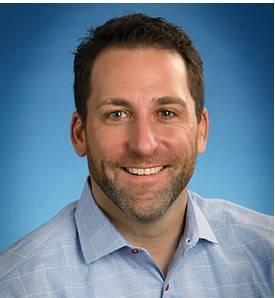

By John Hoekstra, VP, Sustainability & Cleantech Services, Schneider Electric
The transition from a linear to a circular economy is an essential part of sustainable development.
And the acceleration of that evolution is more critical than ever since the business community and world at large are starting to see the long-term impacts of entrenched linear models — natural resource depletion, climate change and economic risks.
Further, about 50 percent of CO2 emissions across the globe are tied to materials, goods that often produce a significant amount of physical and financial waste. It’s clear that alternative business models are needed to create an environment where companies can operate and thrive for decades to come.
A circular economy is centered on the cradle-to-cradle design principle, rather than the more common cradle-to-grave path of planned obsolescence. This focus on producing goods and services in a way that limits the consumption and waste of resources allows companies to use natural capital more efficiently. So how do businesses start to evolve their processes toward a circular approach?
Following are several frequent entry points organizations should consider:
- Opt for Eco Start by reconsidering the design, manufacture and delivery of products — taking inspiration from nature in the form of biomimicry and focusing on process optimization throughout the product lifecycle. For example, Ecovative has designed a new form of packaging made of mycelium or mushroom roots. The raw material is cheap, plentiful and easy to grow, and the packaging is compostable.
- Think Collaborative Economies need a range of businesses of various scales to support the shift from an asset-owning to service-based culture. The practice of reusing, sharing and pooling resources is growing among consumers, demonstrated by the rise of collaborative economics. This includes reselling or donating instead of discarding, letting instead of owning (think Airbnb and Lyft), and the prosumption of energy via technology like microgrids and blockchain.
3. Think Durable
In this new economic model, the durability of products becomes an essential factor to avoid scheduled obsolescence, making it possible to decouple the service provided from the quantity of products distributed and create new value chain streams. A well-known example is Patagonia, a retailer that has grown its business on repair and refurbish principles, encouraging customers to reuse its outdoor gear instead of replacing it. The company also has a center where buyers can send products for recycling, helping further its “never in the landfill” approach and philosophy.
- Focus on Renewable The energy required to power a regenerative economy should itself become a circular asset with a combination of renewable and cleantech resources. From fuel cells to virtual power purchase agreements, there is a growing array of options for companies, all designed to decrease fossil-fuel dependence while increasing business security and resilience. Case in point: The new headquarters for electronics giant Apple includes a mix of solar, fuel cell and microgrid technology to meet the energy needs of the entire campus.
- Innovate and Innovate Again As companies move from linear to more modern systems, they must consider the full scope of pre- and post-production. Philips notably created a bespoke “pay-per-lux scheme” where instead of buying bulbs and fittings, customers only pay for light itself. The company is then responsible for the maintenance of the physical fixtures.
To bring it full circle, these actions are significant, but they are ultimately just a start. The proven limitations of a linear approach require the wide-scale move to a circular economy. Adopting circular principles isn’t just an environmental play, although that is of critical importance. It also makes fiscal sense for individual businesses and helps sustain global markets as a whole.
The Ellen MacArthur Foundation is notable resource for additional information. Its CE100 program — a platform to accelerate the transition to a circular economy — is supported by leading companies across the world such as Apple, Coca-Cola and Unilever.
Organic Farming Gets a Boost from Kashi's Innovative Certification Program
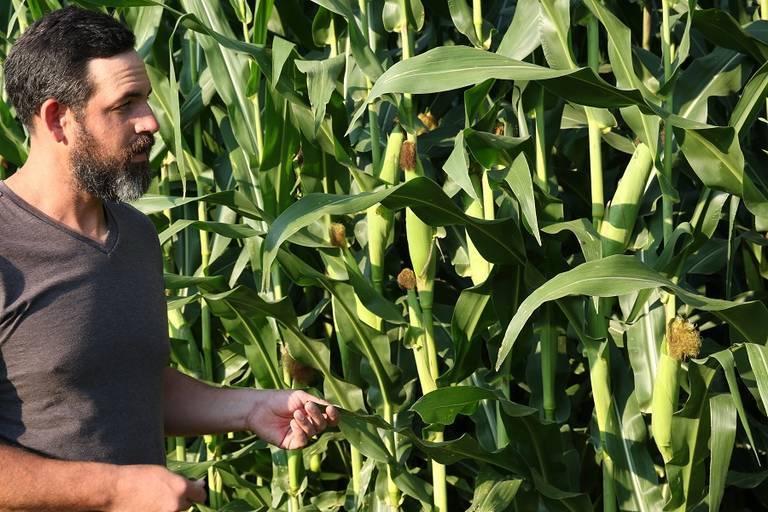

Take a stroll down the various organic isles in any major U.S. or Canadian supermarket, and you'll likely notice something peculiar.
There's often no lack of choices when it comes to selecting certified organic produce. Organic lettuce, onions, apples, and bananas are often in season. Certified eggs and milk too are available.
But reach for a box of certified organic cereal, rice, or other manufactured grain product and, well, your choices of brand and imaginative options begin to decline.
Sure, there's organic cereals and manufactured products on the shelf, but according to Kashi, the Kelloggs company known for its organic whole grain product line, there's not enough. Manufacturers are having a hard time keeping up with demand for organic products.
And the folks at Kashi aren't the only ones that have noticed this trend. By 2014, manufacturers of organic grain products were already predicting a shortage. North Americans' demand for organic products was increasing, but many farmers weren't willing to certify their acreages. According to the U.S. Department of Agriculture, less than 1 percent of U.S. farmland is certified organic.
The reason for this reluctance, says Kashi, is that it takes three long years for a farmer to transition a field to organic acreage in order to certify under an organic certification program. During that time, many such farmers aren't being paid on par with their efforts.
In 2016, the company rolled out a new initiative to help encourage more farmers to transition to organic farming. It connected with Quality Assurance International, an organic product certification organization and created a new transitional certification program for farms that hadn't yet met the benchmarks of certified organic farming, but were willing to do so.
According to Kashi, the project means that as of this year, there will be a 400 percent increase in the amount of acreage available for certified transitional organic crops. The company didn't say how many farmers that actually represents, whether the acreage is in North America or when these farms might attain their certified organic status, but the upsurge effectively creates a whole new line of products for Kashi.
The product line however, isn't organic, so it's unclear whether hard-core organic advocates will be willing to purchase the products while they are in the transitional organic stage.
Kashi has also been providing premiums to farmers that are willing to make the switch to organic. As of this month, the company says, those premiums will amount to roughly $1million in additional pay to transitional organic farmers.
Kashi also says it now has its products certified as non-genetically modified (GMO) and that " [all] Kashi products being made today ... are Non-GMO Project Verified."
As an example of that initiative, the company also announced the release of its latest cereal, Cinnamon French Toast, which is both non-GMO verified and a transitional organic-verified product.
In 2012, the company came under fire by some of its staunchest consumers when they learned that the company produced foods with GMO ingredients. Since then, Kashi has been working to regain ground with organic and non-GMO supporters; an effort that may have contributed to its push to broaden the availability of organic grains and other ingredients in its supply chain.
Images: Kashi Company
Lloyds Banking Group Strives to Help the UK Prosper
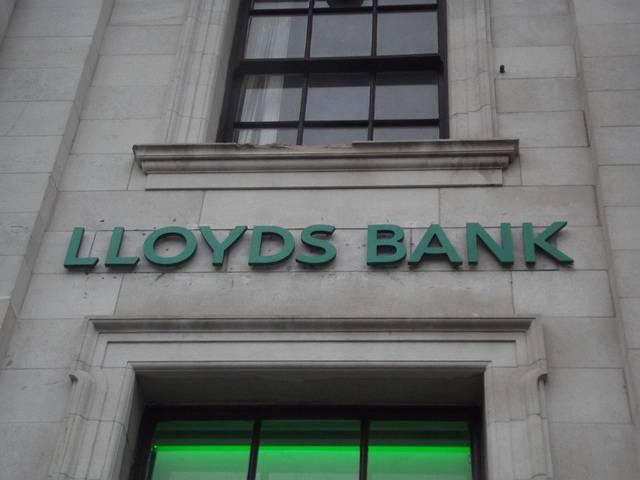

With a history dating back to the late 17th century, Lloyds Banking Group of the United Kingdom now boasts over 27 million customers and manages assets worth well over $1 trillion (over £800).
And according to Lloyds, the bank is doing what it can to help the UK prosper well into the 21st century. This week, the company released its latest corporate social responsibility report, which Lloyds prefers to call its “Helping Britain Prosper Plan.”
The report’s highlights include an ambitious agenda for the rest of this decade, as well as an assessment of how the bank performed on its corporate social responsibility goals over the past three years.
In sum, Lloyds' executives are confident that it has made an impact across British society. For 2017, the company says it achieved 21 out of 22 targets - falling short only on a goal it had for loans it sought to provide to small and medium sized enterprises (SMEs).
But across the board, Lloyds insists it has made a difference. Over $18 billion (£13 billion) was loaned by the bank to first-time home buyers. The company says its support benefitted at least 124,000 startup businesses. And the bank’s various charitable foundations provided funds for over 2,800 nonprofits. Lloyds has also made mental health a focal point of its corporate giving efforts - over $6.7 million (£4.8 million) was distributed to various foundations and services.
And more is to come. Beyond lending efforts such as those made to first-time home buyers and startups, Lloyds says it is keen on improving financial literacy nationwide - with 1.8 million more people to benefit from such skills by the end of this decade. Internally, the company appears determined to make its workforce look like the new, modern Britain - with a pledge to have 40 percent of its senior roles held by women, and 10 percent by racial minorities. Add the company’s commitment to stop human rights and slavery abuses, and the result is a template for how banks can leverage their core competencies to help build a better society.
Want to tell the world about your new CR report? ReportAlert has developed the largest network of corporate responsibility stakeholders available globally – let them help you to spread the word.
Image credit: Elliot Brown/Flickr